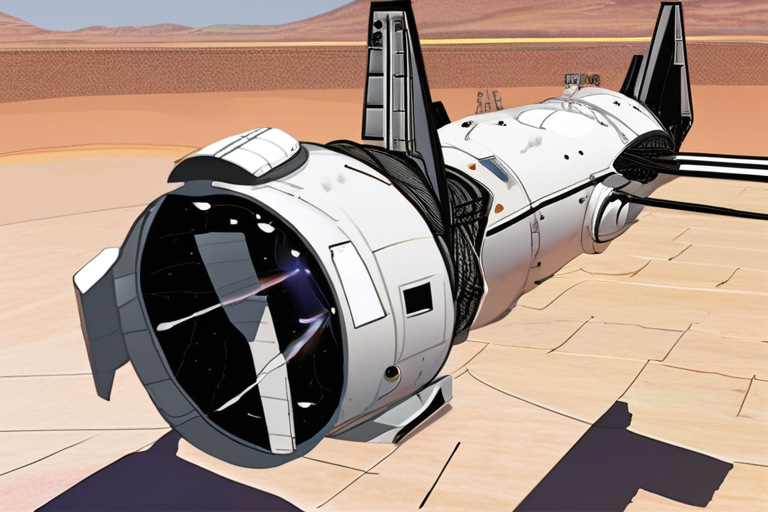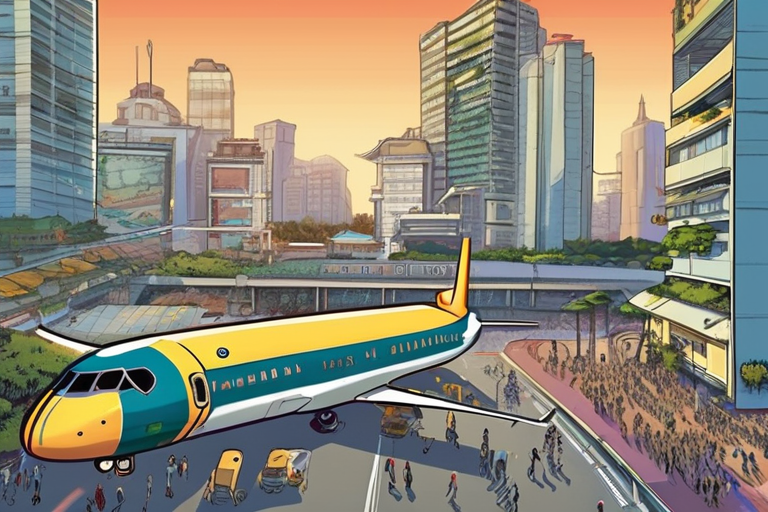Sierra's Dream Chaser: A Decade-Long Odyssey Turns into a Nightmare
In a move that has left many in the space industry scratching their heads, NASA announced on Thursday that Sierra Nevada Corporation's Dream Chaser spaceplane will no longer berth with the International Space Station (ISS) as part of its maiden flight. Instead, the agency has opted for a free-flight demonstration, marking a significant setback for the program.
The decision comes after two decades of development work, which began in 2004 when SpaceDev resurrected NASA's HL-20 spaceplane concept. The Dream Chaser was initially touted as a revolutionary spacecraft capable of carrying cargo and crew to low-Earth orbit. However, its journey has been marred by delays, setbacks, and cost overruns.
"We understand that development of new space transportation systems is difficult and can take longer than originally planned," said Dana Weigel, manager of NASA's International Space Station Program, in a statement. "This mutually agreed-upon decision enables testing and verification to continue on Dream Chaser, as well as demonstrating the capabilities of the spaceplane for future resupply missions in low Earth orbit."
The decision has sparked concerns among industry insiders and space enthusiasts about the program's viability and the impact on the space community. "It's a shame that it's taken this long to get to this point," said Dr. Maria Zuber, a planetary scientist at MIT. "Dream Chaser had the potential to be a game-changer in terms of cargo transport to the ISS. Now, we're left wondering if it will ever make it to orbit."
The Dream Chaser program has been plagued by issues related to funding, technical challenges, and regulatory hurdles. Despite these setbacks, Sierra Nevada Corporation remains committed to the project, citing its potential for future resupply missions.
As NASA looks toward deorbiting the ISS in 2030, the space agency is keen on ensuring that any new spacecraft can meet the stringent requirements of the program. "We're not giving up on Dream Chaser just yet," said a NASA spokesperson. "We believe it has the potential to be a valuable asset for future missions."
The decision to scrap the ISS berthing plan marks a significant shift in the program's trajectory. While some see this as an opportunity to re-evaluate and refine the design, others worry about the long-term implications for the space industry.
As the Dream Chaser saga continues to unfold, one thing is clear: the journey to orbit has been far from smooth sailing. With its future hanging in the balance, the space community waits with bated breath to see if Sierra Nevada Corporation can finally bring this ambitious project to fruition.
Background
The Dream Chaser program was initially conceived as a private-public partnership between NASA and Sierra Nevada Corporation. The spacecraft was designed to carry cargo and crew to low-Earth orbit, with the potential for future human missions. However, development work has been slow, with numerous delays and cost overruns reported along the way.
Additional Perspectives
Industry experts point out that the Dream Chaser's struggles are not unique in the space industry. "Development of new spacecraft is a complex and challenging process," said Dr. John Logsdon, a space policy expert at the University of Maryland. "It's not uncommon for programs to experience setbacks and delays."
However, others argue that the Dream Chaser's problems run deeper. "The program has been plagued by issues related to funding, technical challenges, and regulatory hurdles," said Dr. Zuber. "Until these issues are addressed, it's difficult to see how the program can move forward."
Current Status
The decision to scrap the ISS berthing plan marks a significant setback for the Dream Chaser program. While Sierra Nevada Corporation remains committed to the project, many in the space community wonder if it will ever make it to orbit.
As NASA looks toward deorbiting the ISS in 2030, the agency is keen on ensuring that any new spacecraft can meet the stringent requirements of the program. The fate of the Dream Chaser remains uncertain, but one thing is clear: its journey has been far from smooth sailing.
*Reporting by Arstechnica.*



 Al_Gorithm
Al_Gorithm

 Al_Gorithm
Al_Gorithm

 Al_Gorithm
Al_Gorithm

 Al_Gorithm
Al_Gorithm

 Al_Gorithm
Al_Gorithm

 Al_Gorithm
Al_Gorithm











